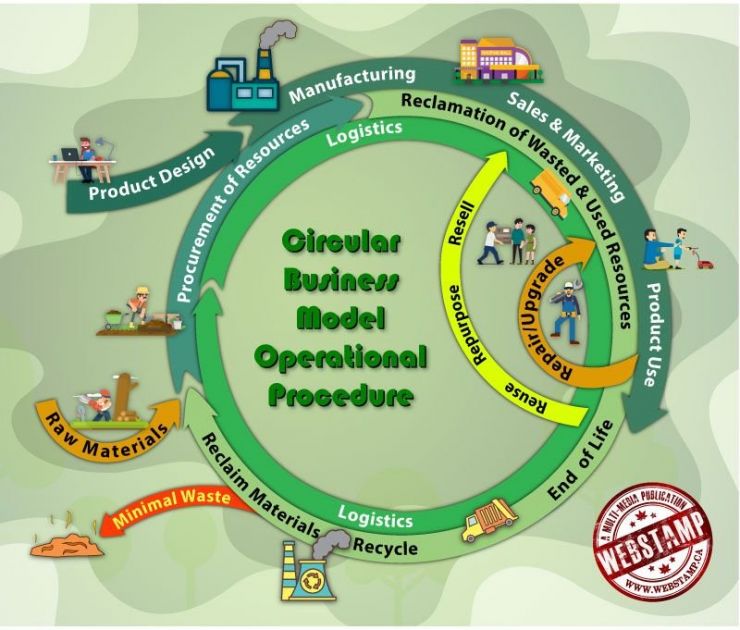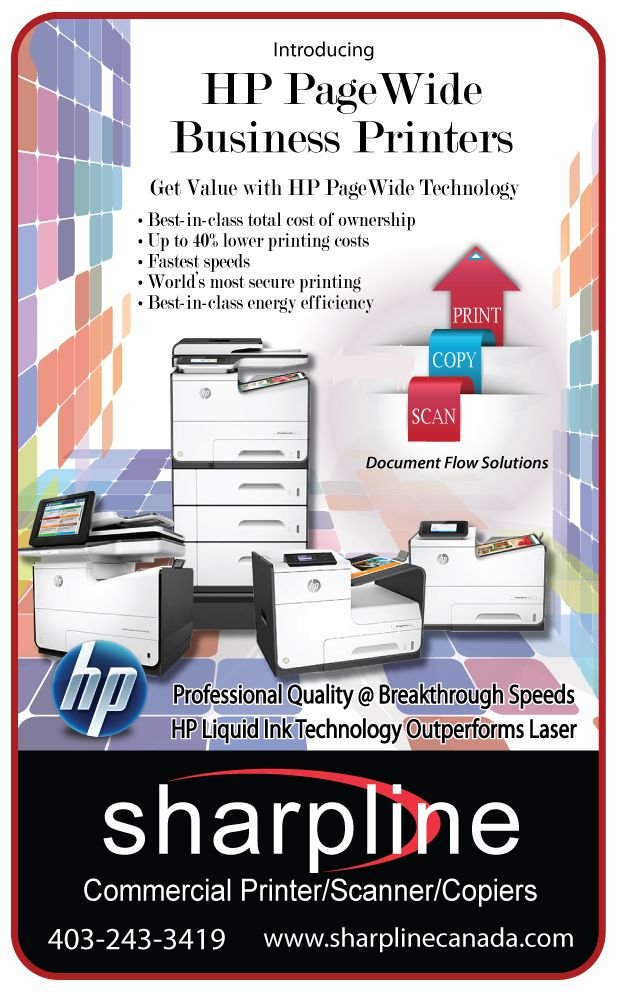WebStamp July 13, 2018
Achieving A Circular Business Model
In WebStamp’s last issue we took a look at the benefits of a Circular Economy with small and medium enterprises (SME) working together using a Circular Business Model (CBM) tailored for their business. A CBM is a method used by businesses in a closed-loop system that prolongs the life of products and materials while using fewer resources. Improving resource efficiency saves on material and labour costs and integrates ties between businesses and their products or services. An SME using a CBM will run more efficiently and operate sustainably while improving the economy and saving the environment.
The current Linear Business Model (LBM) is not only wasteful of resources but also seems to have an unsustainable inflationary factor. After some quick research, I discovered that a 1970 dollar is now worth $7.00 in 2018. However, the price of an average car today costs 10 times one bought in 1970. Many companies, like IKEA, are driving change towards implementing a circular economy and are recognizing the benefits of recycling materials and resources with the rising costs limiting resources.
There is a lot of information on evolving a circular economy business available. WS 3: Risk&Race and Circulab are a couple of board games where players gain insight to the different CBMs, learn circular economy strategies, and the effects on business performance. An SME wanting to develop a CBM should focus on careful management of material flows through product design, developing reverse logistics, incorporating business model innovation and developing cross-sector collaboration.
In order for an SME to make a successful transition towards a CBM, a company needs to generate an action plan and set goals. Draft a roadmap with your key team members to decide what you want to achieve and the steps needed to get there. Develop and follow a policy that is aligned with your company's values and ethics. Focus on how the company can become more exemplary at efficiency and reducing or eliminating waste. Contemplate enabling people to lead by undertaking the better use of renewable energy, cleaning the air, water and soil, and increasing biodiversity.
With the many studies, research, and workshops associated with implementing a CBM, it is easy to acquire the tools and information to formulate a plan to successfully transition to a CBM. Once a company has charted its course, it is time to include the entire organization and employees. Inform them on the goals and plan to became a more sustainable business. Be sure to include everyone and get their ideas and thoughts on improvements.
Achieving a circular economy is about moving from a system of waste to one of endless resourcefulness. The goal is to establish a viable business opportunity that successfully tackles the environment, drives performance, and stimulates economic growth and development with innovation and positive competitiveness. Many SMEs will fall into one, or more, of the five, proposed CBM categories and working in unison with other SMEs in all categories.
For example, numerous windshield replacements leave many discarded pieces of glass sandwiching a plastic film. Shops replacing auto glass have recyclers separating the PVB from the glass. The PVB is a second life converted into a new resource material as a latex precoating in carpets. We have a glass manufacturer supplying a product used by a business and sold to a consumer. The previously wasted product (PVB) from the discarded windshield is now renewed into a new material by a recycler and reused by another manufacturer. SMEs working together in a Circular Economy.
Learn from the many case studies and companies that have begun the movement towards a circular economy. Identified which of the five circular business models that is prevalent to your company. The Circular Business Models a SME should examine are the circular supply chain, implementation of resource recovery, having product-as-a-service, extending product life, and usability and resource sharing. Chose the CBM(s) that apply and then develop one specific for your enterprise based on it.
Finally, be sure to actually implement and follow the timeline you have set. It is also very important to bring on board your business partners, suppliers, and clients and engage them to unite in achieving your goals towards a Circular Economy. Next issue of WebStamp we will begin to explore the different Circular Business Models in detail. Look into what a CBM can do for you, your family, company and environment.
Share This Article
References:
https://www.theguardian.com/sustainable-business/how-to-implement-circular-economy-business
https://www.tandfonline.com/doi/pdf/10.1080/21681015.2016.1172124?needAccess=true
https://www2.mst.dk/Udgiv/publications/2016/06/978-87-93435-86-5.pdf
https://research.uca.ac.uk/3270/1/MC%20Paper.pdf
https://www.greenbiz.com/article/5-business-models-put-circular-economy-work
https://www.thebalancesmb.com/windshield-recycling-programs-launched-2878095

Articles in this Issue
Improving the Local Economy
by Connecting Calgarians
With their Communities
Join the M.A.D. Movement
Calgarians can continue to Make A Difference by simply making a M.A.D. Move by doing anything, no matter how small, that has a beneficial outcome. WebStamp encourages everyone to help stimulate the local economy by Buying Locally.




